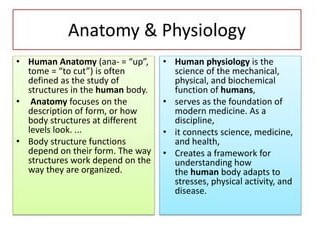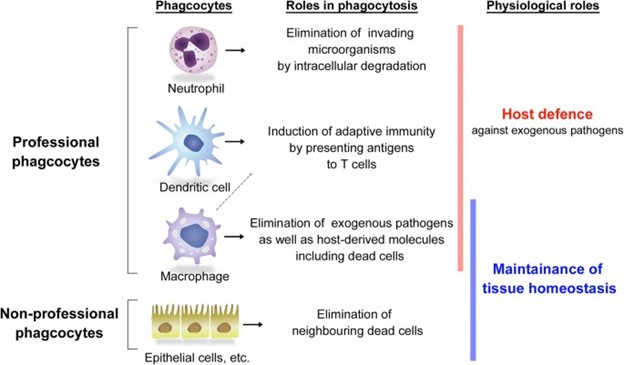Anatomy and physiology are difficult to separate because:
Physiological functions depend on anatomical structures.
Our understanding of physiology is changing more than our understanding of anatomy.
Body parts take up space.
Physiological functions in an organism are ongoing.
The Correct Answer is A

This is because anatomy and physiology are closely related branches of biology that study the structure and function of living organisms respectively.
Anatomy describes the shape, size, location, and relationships of body parts, while physiology explains how those parts work together to maintain life.
For example, the anatomy of the heart determines how it pumps blood, and the anatomy of the lungs determines how they exchange gases.
Choice B is wrong because our understanding of both anatomy and physiology is constantly changing as new discoveries are made in the field of biology.
Choice C is wrong because body parts take up space regardless of their physiological functions.
Choice D is wrong because physiological functions are not limited to an organism, but can also occur at the cellular, tissue, organ, and system levels.
Nursing Test Bank
Naxlex Comprehensive Predictor Exams
Related Questions
Correct Answer is B
Explanation
A hormone is a secreted molecule that is carried in the bloodstream to where it acts on target cells that bear specific receptors for that hormone.
This definition is consistent with the dictionary and encyclopedia sources.
Choice A is wrong because it contradicts the definition of a hormone.
Hormones are not just any secreted molecules, but ones that have specific effects on cells with matching receptors.
Correct Answer is D
Explanation
Macrophages are the main cells that clear out the cell debris by phagocytosis, a process that involves recognition, engulfment, and degradation of the disposable particles.

Macrophages are professional phagocytes that can be found in various tissues and organs, where they perform efferocytosis, the removal of dead and dying cells.
Choice A is wrong because lymphocytes are not phagocytes, but rather immune cells that mediate adaptive immunity by producing antibodies or killing infected cells.
Choice B is wrong because cytokines are not cells, but rather soluble molecules that regulate inflammation and immunity by acting as signals between cells.
Choice C is wrong because mast cells are not primarily involved in clearing cell debris, but rather in allergic reactions and innate immunity by releasing histamine and other mediators.
Whether you are a student looking to ace your exams or a practicing nurse seeking to enhance your expertise , our nursing education contents will empower you with the confidence and competence to make a difference in the lives of patients and become a respected leader in the healthcare field.
Visit Naxlex, invest in your future and unlock endless possibilities with our unparalleled nursing education contents today
Report Wrong Answer on the Current Question
Do you disagree with the answer? If yes, what is your expected answer? Explain.
Kindly be descriptive with the issue you are facing.
